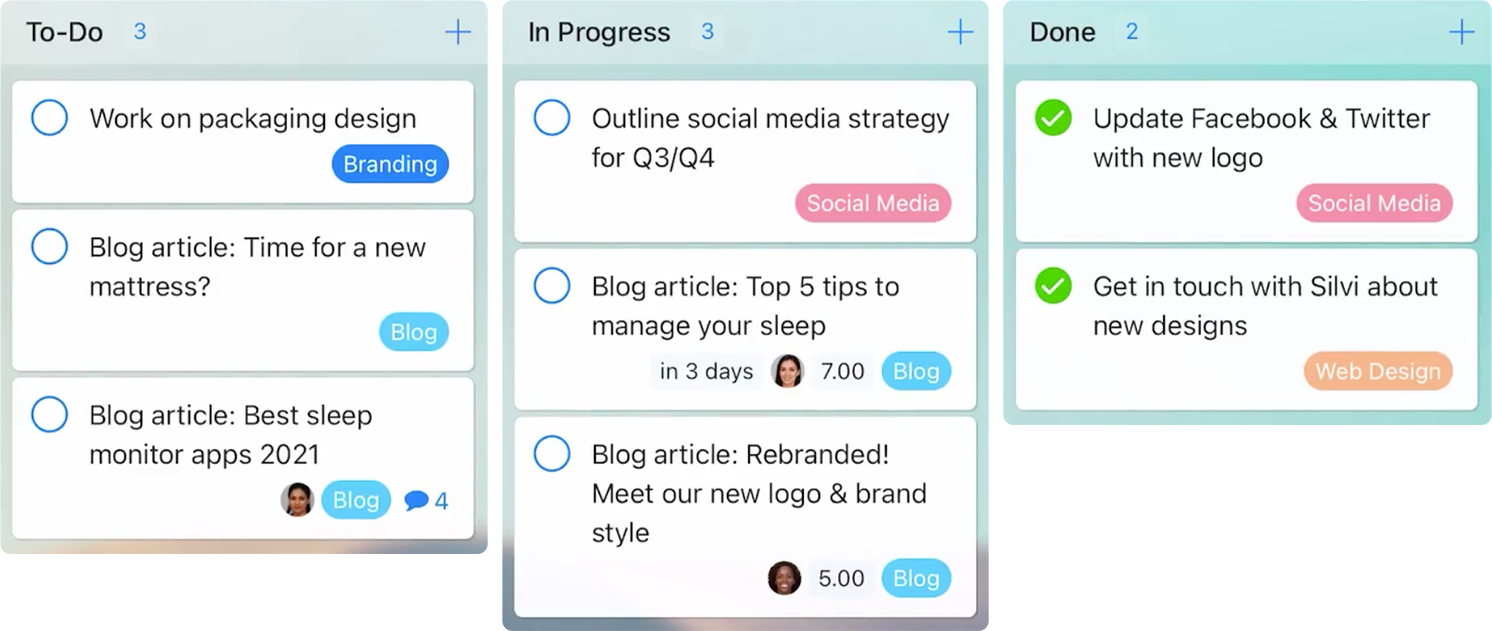
I have a love/hate relationship with to-do lists. I love creating them and the sense of accomplishment they can bring when a task is crossed off, however, I hate when I find myself not completing all the tasks on the list.
Using a to-do list can lift the weight of carrying around tasks in our heads and alleviate the stress of having to remember what needs to be done. It is also a great organisational tool that can be used for just about any aspect of life. However, a lot of the time I find myself struggling to utilize them to their full potential—and I know I’m not alone.

In this article, we’ll take a look at why to-do lists fail and whether an online solution is a way to go.
To-Do Lists and Productivity
To-do list software is a-plenty. All you have to do is type in “to-do list” into Google, and you’ll be inundated with about a gazillion products with various bells and whistles announcing how their tool is the tool that can make you more productive and keep your life organized AF.
With Zenkit’s list view combined with the task-list add-on, it makes a great Wunderlist alternative for Wunderlist users looking for a new app come May!
But can a to-do list app really make you productive?
In short, yes. Yes, they can, but they can’t do it alone. Improving your productivity can be greatly assisted with an online to-do list, but the fundamental factor of it all is you — the user.
To-do list software is designed to make you become more productive, but you have to be proactive and willing to do what it takes to milk the most value out of it.

Think of it this way, simply owning a baseball bat doesn’t make you the next Babe Ruth, nor does it even make you an eager baseball player. All it says is that you’re the owner of a baseball bat.
The same can be said for having a to-do list app. Without input and effort, you’re not going to hit a productivity home run.
Why To-Do Lists Fail
There are many reasons why a to-do list can fail to deliver us the sense of accomplishment we expect from it. After all, no matter how much we meticulously schedule task time or allocate time buffers, the unavoidable interruptions of life are inevitable. In saying that, however, there are also preventable factors that could contribute to to-do list failure, such as:
Items are not being prioritized properly
Prioritizing the items or tasks on your list is an imperative step towards efficiency. Without doing so, you are not maximizing your to-do list’s productivity value. The best practice is to order your list with the most important item on top. Using this system will bring to your attention what needs prompt action, enabling you to complete that first.
Seeing all the items listed can be overwhelming
A lengthy list doesn’t equal a good list. If you experience this, then your to-do list may have one too many tasks on it. Try a strategy, such as the 1–3–5 rule as recommended by The Muse’s Alex Cavoulacos, where you include on your list one big thing, three medium things, and five little things to achieve in one day. By setting yourself up with a realistic goal, you are more likely to achieve everything on it.
Tasks are being added without existing ones being completed
Prioritizing and following a strategy can stop your list from turning into something formidable. Avoid adding tasks without completing existing ones and this may stop you from walking away from them.

Projects are being confused with tasks
An item on your to-do list that requires more than one step should be broken down into something smaller. Don’t confuse tasks with projects. Tasks should be specific, preferably starting with a verb, and actionable in one go.
Your to-do list isn’t flexible enough
If you’ve gone down the pen and paper route, then perhaps you’re relinquishing your to-do list because it’s not adaptable enough. Online to-do lists are more forgiving when it comes to editing and updating tasks. They also include features that can streamline your productivity experience.
Online To-Do Lists vs. Pen and Paper
Many companies have spent years trying to reinvent the to-do list (guilty) in hopes of finding a solution to our productivity woes. While incorporating fancy features such as notifications and task delegation may work for some, there are those who may find them overbearing.
To-do list software nowadays can do more than just list out the items of a task list, they can remind you when something is due, or even integrate with other apps. But remember, the more your online to-do list can do, the more attention it will demand.
Favoured by many, using a pen and piece of paper is another way to create a to-do list. It is a timeless approach that just about anyone can take on board. It’s also inexpensive and requires little to no instruction. While I can understand the reason why many people prefer this method, I myself find it a little restrictive.
The biggest selling point (in my opinion) of an online to-do list is that they can be available on various platforms, which means they’re accessible wherever you go, whether at home, in the office, or casually strolling around town.
(Sure, there’s the argument that a pen and paper can do the same thing, but come on, how many of us really carry around a piece of paper and pen with us wherever we go?)
Choosing an Online To-Do List That Works for You
Selecting which to-do list software to use is crucial. So much so that it could potentially make or break your productivity habits.
When it comes to productivity software of any kind, there is no one-size-fits-all. A to-do list app that works wonders for your friend or colleague may not have the same effect on you. So, what you need to do is find an online to-do list that not only meets your requirements but also compliments your capabilities.

Prior to doing your research, make sure you write down the reasons why you want/need an online to-do list, as well as what you expect from the tool. These lists will prove handy when reading reviews and articles or getting recommendations from friends or colleagues.
Don’t forget to trial products. As well as free trial periods, there are many free to-do list apps. It wouldn’t hurt to sign up to a few of the ones that match what you’re looking for best and to have a play around with it. Take advantage of the tutorials and how-to guides as well. Understanding the product and knowing how to actually use it will make for a higher chance of not abandoning it.
Further Tips for Boosting Productivity
If you find that you need to up the ante on your productivity habits, you could try one of these three techniques along with your online to-do list.
1. Getting things done
Getting Things Done, or GTD for short is a framework for organizing and tracking tasks. Created by David Allen, a leading authority in the fields of organizational and personal productivity, it forces you to add both context and structure to tasks so that the items on your online to-do list are really the things you need to do.
“Your mind is for having ideas, not holding them” — David Allen
To implement GTD, you need to capture and process the ‘stuff’ that enters your life, following a workflow of five steps. More info can be found here.
2. Time blocking
Time blocking is a technique that can help us tackle the tasks on our list. It is the practice of scheduling certain periods of time in which to tackle specific tasks. During these time blocks, you focus on only one task at a time. The emphasis is on the word ‘focus’. This method won’t work if you allow interruptions or distractions.
It also won’t work if you schedule unrealistic time blocks. Remember to include time for rest and relaxation by scheduling breaks, and to also include a little buffer time just in case!
3. Eat that frog
This doesn’t involve the consumption of amphibians, rather, it’s a technique that encourages you to tackle your biggest task first as a way to avoid procrastinating.
‘The frog’ refers to the terrible, horrible, no good, very bad task that you just don’t want to do, but know you have to do because it holds the most consequence if you don’t complete it. The idea is that once that task is out of the way, it will give you the biggest feeling of accomplishment and will set the ball rolling for the rest of your tasks for the day.
Final Thoughts
Using an online to-do list really can make you productive, but it requires some user input and effort. Once you’ve selected your app, my advice is to start learning how to navigate it and then apply some of the tips mentioned above if you were interested in taking it one step further.
A good online to-do list app shouldn’t take you too long to understand. If it does, then perhaps it’s a little too fickle for you.
Zenkit’s online to-do list is incredibly user-friendly and comes with a delightful feature where the task you’ve crossed off automatically moves to the bottom of the list! Oh, and it’s free to use for single users forever.
So, why not give it a go? Register for a free account and start building your online to-do list today!
Cheers,
Dinnie and The Zenkit Team





Leave a Reply